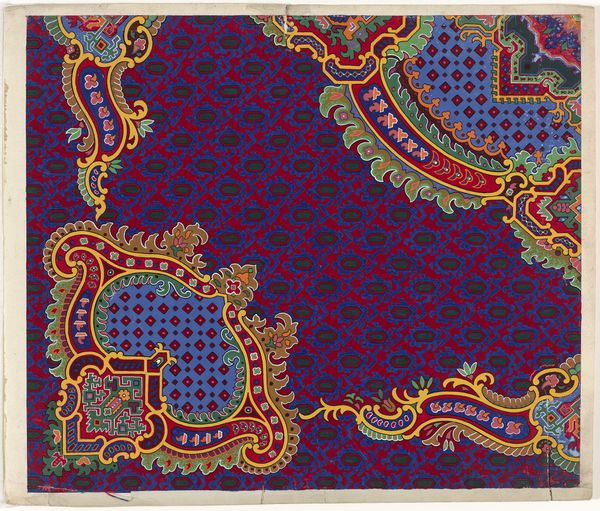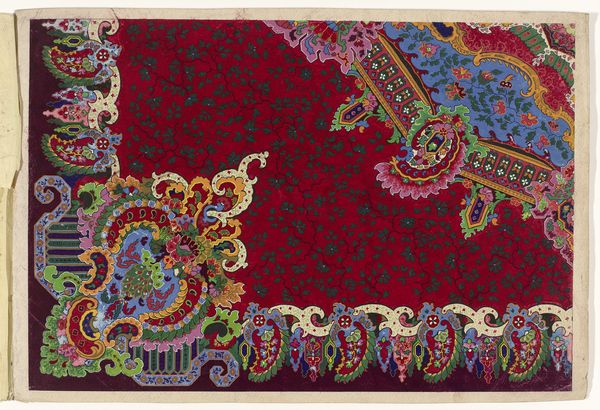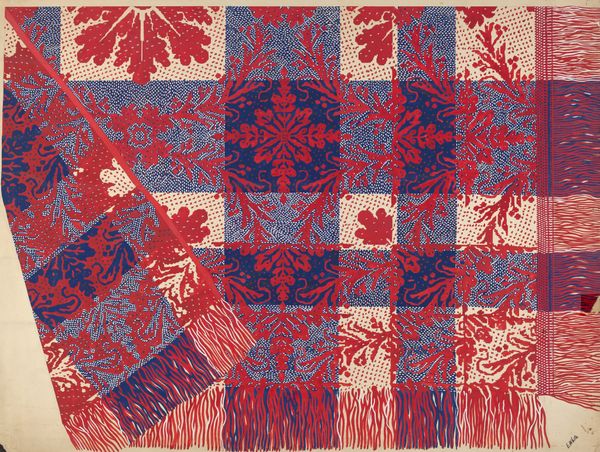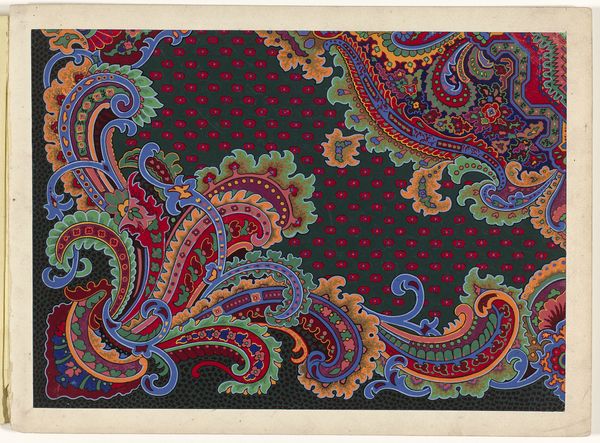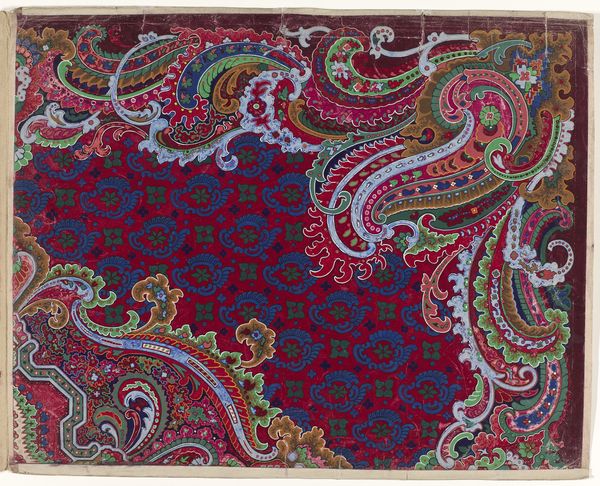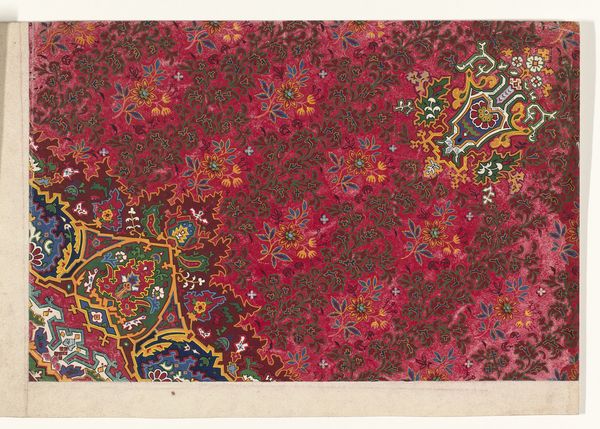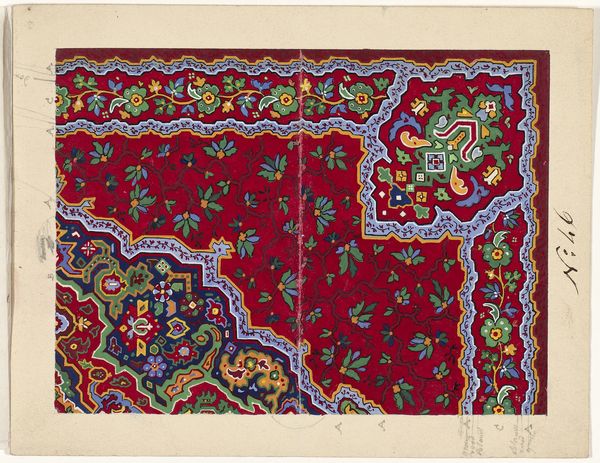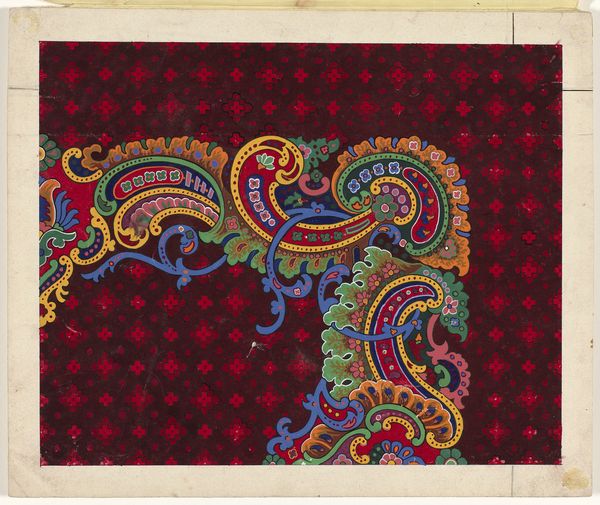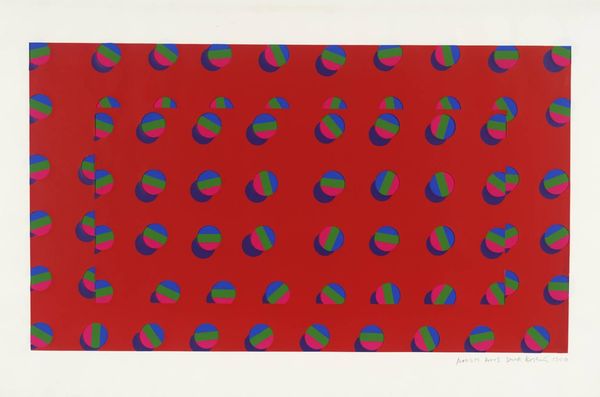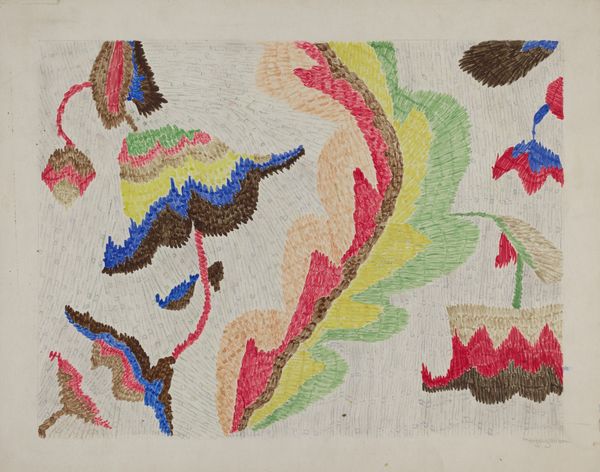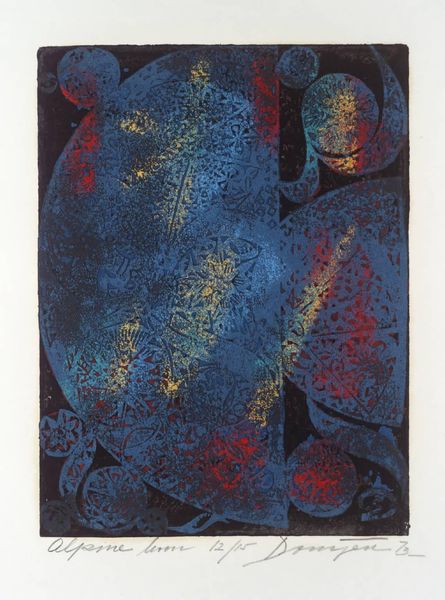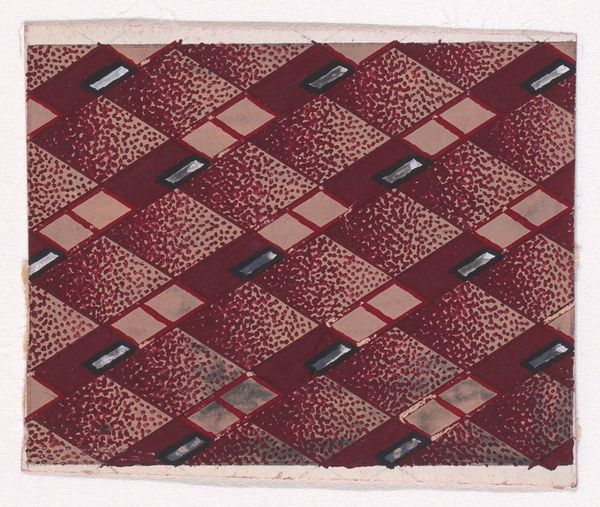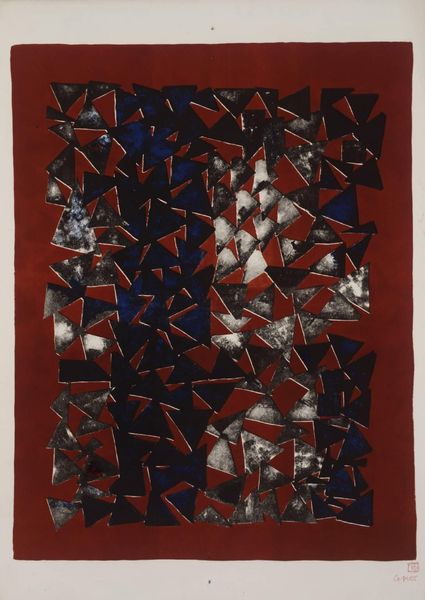
mixed-media, tempera, textile
#
mixed-media
#
tempera
#
pattern
#
textile
#
organic pattern
#
pattern repetition
#
decorative-art
Dimensions: height 230 mm, width 330 mm
Copyright: Rijks Museum: Open Domain
Editor: So this is an anonymous piece, a "Fragment van een ontwerp voor een tapijt," or fragment of a carpet design, created sometime between 1854 and 1864. It’s mixed-media, including tempera and what seems like textile. What strikes me is how incomplete it feels, almost like a torn piece. What stands out to you? Curator: The fragment immediately draws my attention to the Victorian obsession with the exotic and its impact on design. The paisley pattern, likely inspired by Kashmiri shawls that were fashionable at the time, reveals how global trade influenced even domestic textiles. It would have been an object that was produced through, and helped visualize, an expanding global trade. How do you think its incompleteness speaks to this? Editor: It makes me think about accessibility and labor. Was this kind of design meant for everyone, or just certain classes? Did its display change over time, and were tapestries easily accessible to different populations? Curator: Exactly! These patterned textiles weren't merely decorative; they were indicators of status, accessible primarily to the middle and upper classes. Display was dictated by wealth – adorning homes, signifying taste. Tapestries would’ve been costly and required upkeep. It speaks to the power dynamics inherent in design. Were there local traditions, that this carpet design either complemented or suppressed? Editor: Hmm, that's fascinating. I didn’t consider that cultural clash. Curator: It prompts questions, doesn't it? By examining the artifact’s history – where it was made, who used it, and the narratives surrounding its creation and consumption – we can better understand its complex position in society. I appreciate that incomplete design, it tells us, so to speak, of displacement and erasure. What's your perspective now? Editor: Thinking about its social context makes the design more compelling, and raises ethical concerns, like labor practices during its creation. Curator: Precisely. Historical context offers invaluable insights! It's these details of everyday design, the domestic, and private spaces, that reveal the broader picture.
Comments
No comments
Be the first to comment and join the conversation on the ultimate creative platform.
